

The emergence of Tech-2550 has completely changed the traditional mirror leveling technology path, marking a major innovation in TAG Heuer leveling agent technology. Its significance goes far beyond a single “new product launch” and fundamentally solves the long-standing technological contradictions and application pain points in the industry.
1、 Tech-2550 ends the complex system of “dual additives coexisting”
Pain points of conventional mirror leveling scheme:
Although the performance bias of additives is obvious, the division of performance and significant side effects after combination increase the complexity and difficulty of the formula.
Conventional shortwave leveling (micro leveling, anti shrinkage) relies on organic silicon or fluorine modified materials. The former has strong foam stability and may affect recoating, while the latter contains PFAS, is costly, and carries significant environmental risks. Long wave leveling (macroscopic flatness) relies on acrylic ester additives, which have good compatibility and low foam stability, but weak anti shrinkage/short wave leveling ability.
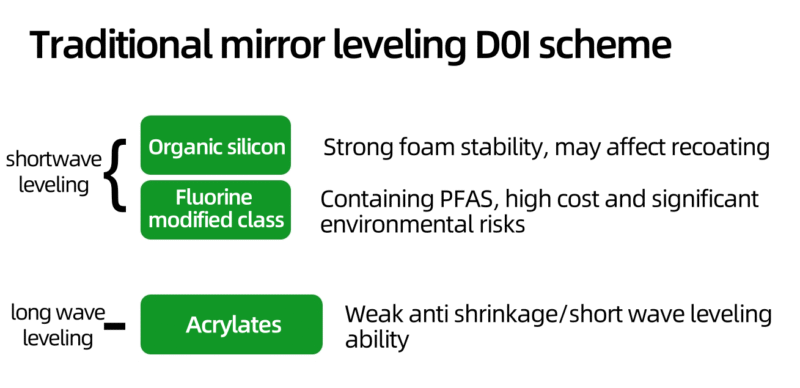
To achieve mirror leveling, the formulation engineer needs to add two types of additives at the same time, repeatedly adjust the ratio to balance performance, which can easily lead to compatibility issues and stable foam stacking. Management not only increases storage pressure, but also compresses bargaining space during procurement!
2、 Tech-2550 single dose dual effect plan:
Tech-2550 combines silicone and polyacrylic segments directly through chemical bonds to form a silicone modified acrylate copolymer (SMAC), forming a single, structurally clear hybrid macromolecule that provides two functions in one product.
Addressing the root cause of short and long wave leveling, the compatibility of long wave leveling and the substrate wettability of short wave leveling are no longer in opposition, but are achieved through intrinsic synergy through molecular design.
3、Tech-2550 Performance Advantages
Ⅰ – Realizing the ‘Impossible Triangle’
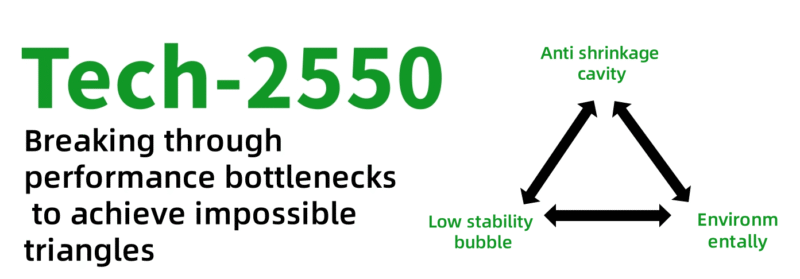
Paint leveling agents have long faced the “impossible triangle” of “anti shrinkage ability, low foam stability, and environmental safety” that cannot be achieved simultaneously“
Organosilicon: Strong anti shrinkage pore, but high foam stability, which may affect recoating, but high cost with PFAS;
Fluorine modified class: Strong resistance to shrinkage porosity;
Acrylic esters: low foam stability, environmentally friendly, but weak resistance to shrinkage.
The Breakthrough of Tech-2550
Anti shrinkage ability>Fluorine
Stability ≈ Acrylic ester (much lower than organosilicon)
Environmental safety: Free from PFAS and organic tin. Does not contain benzene solvents, does not affect recoating
Ⅱ – Structural advantages and mechanisms
Tech-2550 leveling agent overcomes the microphase separation problem that may arise from traditional physical mixing or simple copolymerization, ensuring that the excellent surface migration of organosilicon and the good compatibility/leveling of polyacrylic esters can work synergistically and uniformly, maximizing the synergistic effect. Chemical bonding is more stable than physical adsorption, reducing the risk of component separation during storage or use.
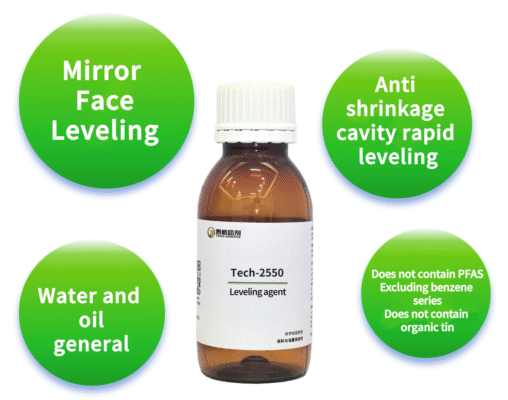
The unique hybrid structure of Tech-2550 leveling agent enables it to effectively function at different stages of coating drying. The polyacrylate portion provides good early compatibility and flowability (facilitating long wave leveling), while the organosilicon portion rapidly spreads on the surface, reducing surface tension and effectively eliminating small surface defects (short wave leveling/anti shrinkage porosity).
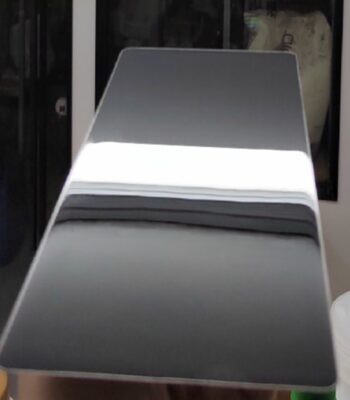
Tech-2550+1K Hydroxypropyl Resin Mirror Leveling DOI Effect Display
4、Performance Analysis of Tech-2550
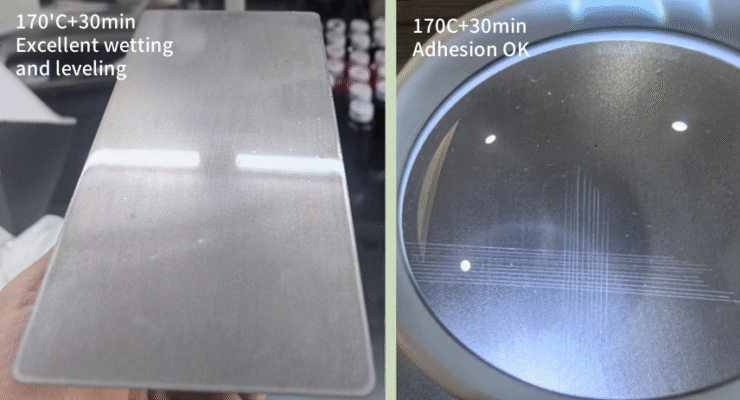
Tech-2550 Polyester System (170 ℃+30min) Effect Demonstration
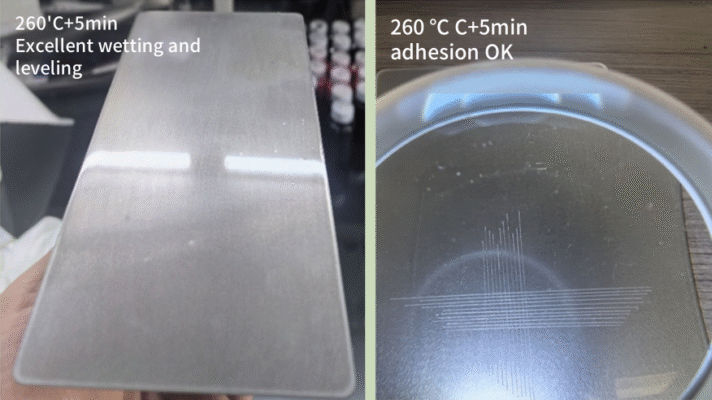
Tech-2550 Polyester System (260 ℃+5min) Effect Demonstration
At high temperatures, ordinary organic silicon leveling agents may decompose, fail, or migrate excessively. They can still maintain excellent leveling and adhesion under two high temperature conditions of 170 ℃ and 260 ℃, proving the thermal stability of their molecular structure and their enormous potential in high-temperature applications such as coil coatings and high weather resistant industrial paints.
Although the TAG Tech-2550 contains silicon, its unique chemical bonding structure effectively inhibits excessive migration and accumulation of silicon to the surface, avoiding adhesion issues caused by silicon contamination during recoating.
Ⅰ、Excellent anti shrinkage and fast leveling
Excellent performance on difficult to apply substrates with oil resistant agents (low surface energy), TAG Tech-2550 leveling agent has better anti shrinkage performance than its fluorocarbon competitor 3600, and ranks among the top in fast leveling sorting, effectively avoiding construction defects.
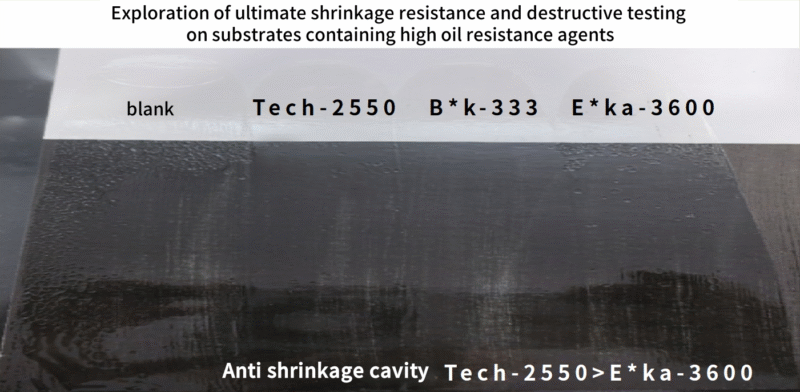
Anti shrinkage cavity: TAG Tech-2550>3600
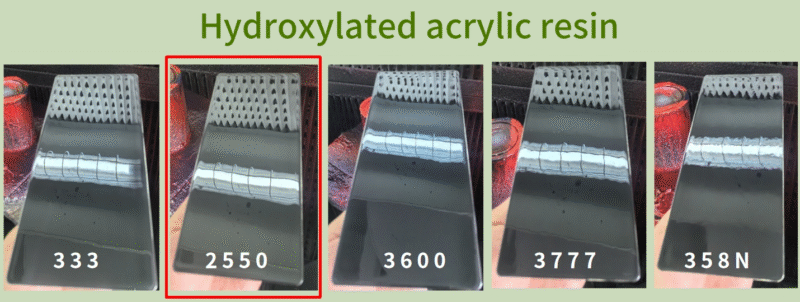
Rapid leveling performance: TAG Tech-2550 ≈ 333>3600>3777>358N
Ⅱ、Excellent instability of foam
Tech-2550 leveling agent is much lower than organic silicon leveling agent in various systems, and is also superior or similar to acrylic and fluorine modified leveling agents. This is crucial for systems that require good defoaming performance, such as high gloss varnishes and industrial paints that require no bubbles.
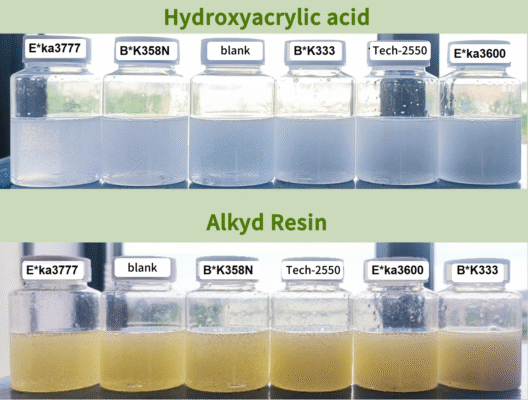
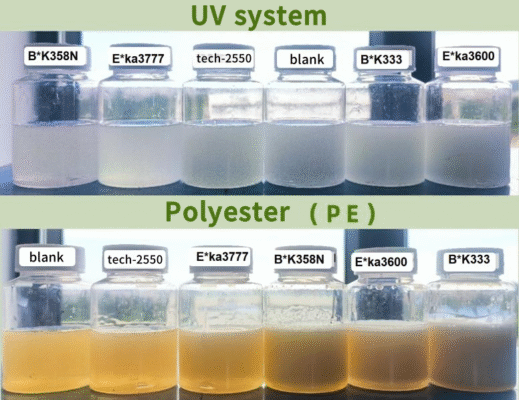
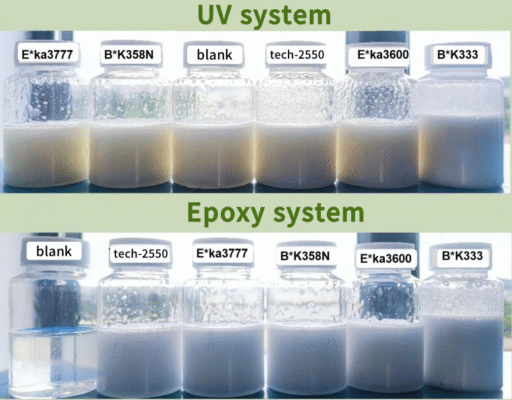
Ⅲ、Wide compatibility
Tech-2550 leveling agent in acrylic acid UV、 The compatibility of alkyd and unsaturated polyester (PE) systems is excellent, and it is better in saturated polyester systems. Overall performance outperforms multiple competitors
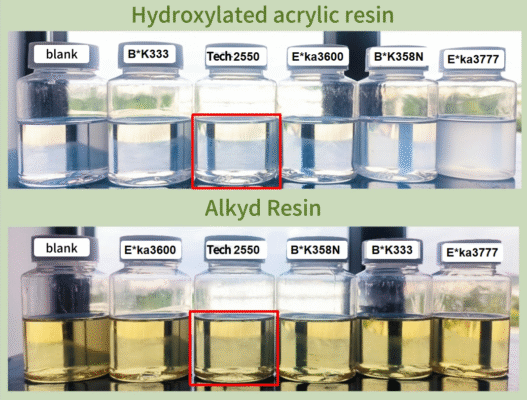
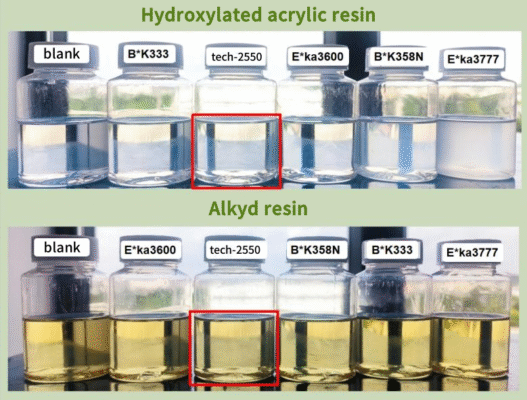
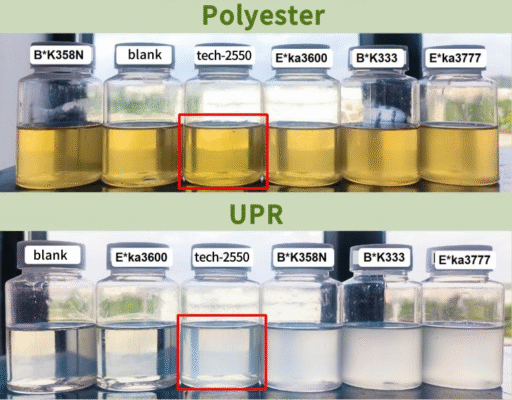
Ⅳ、Excellent thermal storage stability
After baking at 50 ° C for 7 days, the viscosity and transparency of the system with the addition of TAG Tech-2550 remained unchanged, indicating that the product has good long-term storage and use stability. This means that the product has stable performance during warehouse storage, transportation, and customer on-site storage, is not easily deteriorated, and is convenient and reliable to use.
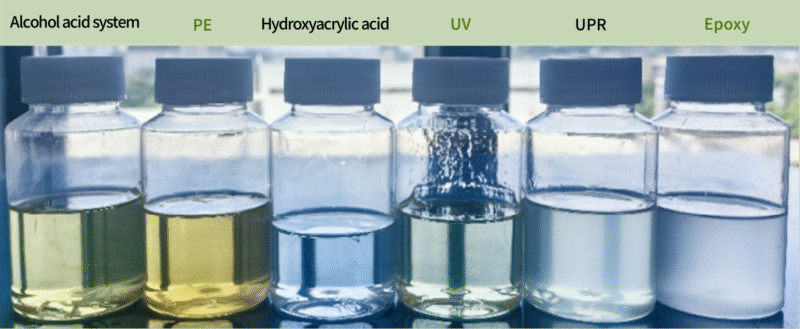
Ⅴ、Environmental characteristics
Tech-2550 explicitly does not contain perfluorinated/polyfluoroalkyl substances (PFAS) to avoid the environmental pollution risks caused by such “permanent chemicals” and comply with increasingly stringent environmental regulations. It also does not contain organotin or benzene based substances
The traditional approach is the physical compounding of different chemical structural additives, while the TAG Tech-2550 achieves performance leaps through precise molecular level hybridization design, demonstrating advanced research and development capabilities.
Amid the global ban on PFAS, the Tiggo Tech-2550 has become a new compliant alternative with its performance of “no fluorine but better than fluorine containing”, providing new possibilities for high demand application scenarios.
For formula developers, the emergence of the Tiggo Tech-2550 means:
1. No need to sacrifice other performance for ‘long short wave balance’ anymore;
2. Fluorine additives containing PFAS can be discarded without compromising quality;
3. Having stronger technical confidence in scenarios such as high temperatures, heavy coating, and harsh substrates.
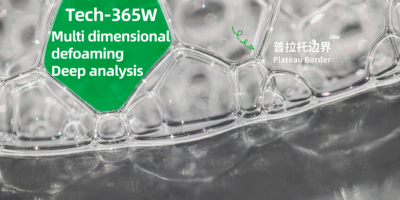
Deep analysis of Tech-365W’s “multidimensional defoaming”

Full process solution for automotive repair paint (formula practical version)

Tech-6752: A New Breakthrough in Dispersion Technology for Transparent Iron Oxide Nanopaste

New Tech-5366: A New Height in Stable Inorganic Materials

Tech-2550 true mirror leveling (excluding PFAS), no need for complicated compounding